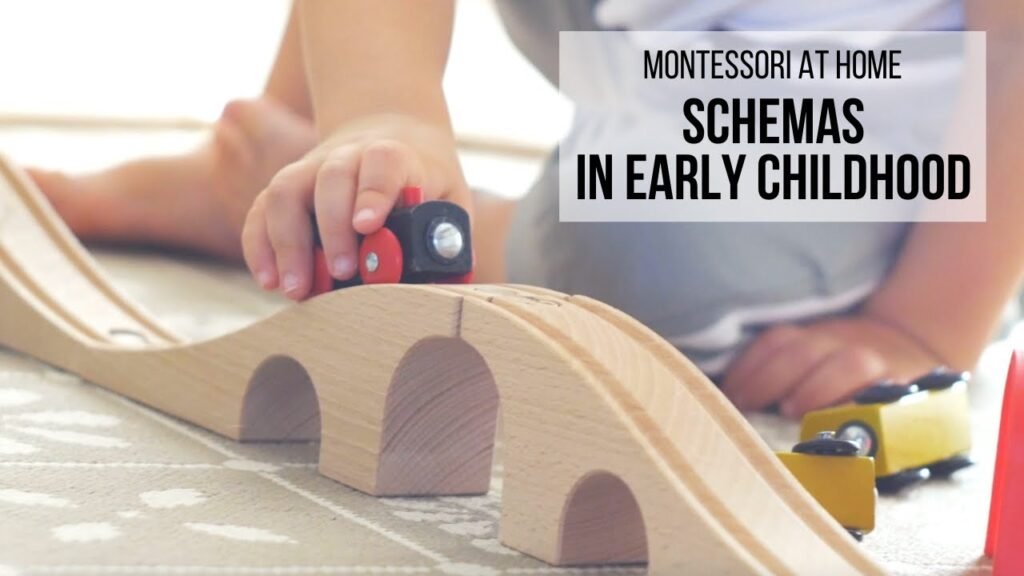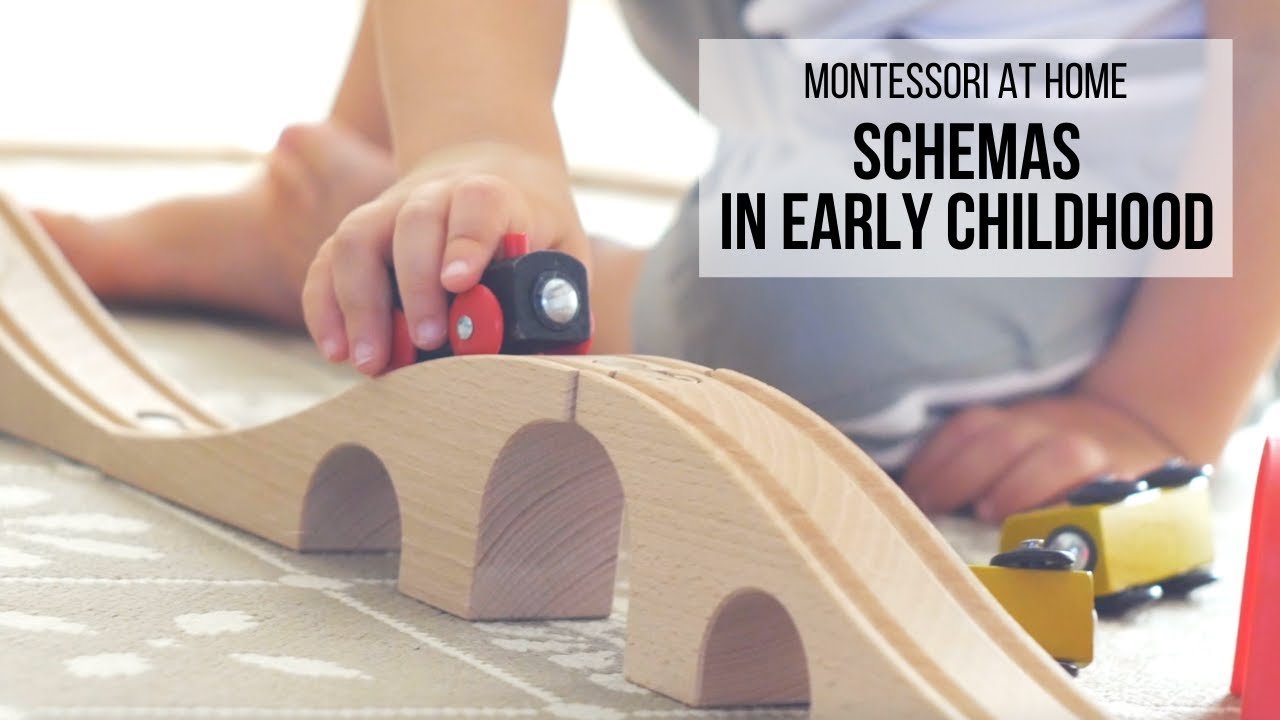Hi there! So, today we’re going to talk about something really interesting called “Identifying Schemas in Early Childhood.” Have you ever noticed your child doing certain behaviors that seem a bit unusual, like throwing things or climbing all the time? Well, guess what. These are actually common schemas in early childhood development. Schemas are patterns of behavior that young children display as they try to understand the world around them. And in this video, we’re going to learn how to identify 8 of the most common schemas and provide some ideas for activities that can support your child’s exploration of them.
As a busy parent with a young child, it’s important to recognize these schemas and embrace them as part of your child’s learning journey. By understanding what schemas are and how they manifest in your child’s behavior, you can help create a positive environment for them to explore and learn. Instead of constantly saying “no” or trying to stop these behaviors, finding positive outlets for your child’s energy can be a game-changer. So, let’s dive into the different schemas, how to recognize them, and how you can provide activities to help your child explore and learn through these natural urges.

Understanding Schemas in Early Childhood
As a parent, you may have observed certain patterns of behavior in your child that seem repetitive or unusual. These patterns are known as schemas and play a significant role in early childhood development. Understanding schemas and their impact on your child’s learning journey is crucial for providing them with enriching experiences that support their growth and development.
Definition of Schemas
Schemas refer to repetitive and characteristic patterns of behavior that children exhibit during play and exploration. These behaviors can help children make sense of the world around them and enhance their understanding of concepts and relationships. Identifying and understanding schemas can provide valuable insights into a child’s interests, abilities, and developmental needs.
Importance of Identifying Schemas
Recognizing and acknowledging schemas in children can help parents and caregivers create a supportive environment that nurtures their natural inclinations and curiosity. By understanding the various types of schemas, you can tailor activities, toys, and learning experiences to engage and stimulate your child effectively.
Common Types of Schemas
Transporting Schema
Children exhibiting a transporting schema often enjoy moving objects from one place to another. Providing them with items to transport and containers to carry them in can satisfy their urge to engage in this type of play.
Transforming Schema
Children with a transforming schema show a strong interest in changing the form or appearance of objects. Offering them materials for building, creating, and transforming can encourage their creativity and problem-solving skills.
Enveloping Schema
Children with an enveloping schema tend to enjoy wrapping themselves or objects in materials like blankets or fabric. Providing them with items to cover or hide can support their exploration of this schema.
Trajectory Schema
Children with a trajectory schema are fascinated by movement and spatial relationships. Engaging them in activities that involve running, climbing, throwing, and kicking can help channel their energy and curiosity.
Positioning Schema
Children exhibiting a positioning schema are interested in arranging objects in specific positions or patterns. Providing them with building blocks, puzzles, and other spatial manipulation tools can help them explore this schema.
Connecting Schema
Children with a connecting schema enjoy joining objects together or creating structures. Offering them toys like building blocks, magnets, and construction sets can enhance their creativity and fine motor skills.
Rotation Schema
Children with a rotation schema are intrigued by spinning, twisting, and turning objects. Providing them with toys that allow for rotational movements can cater to their sensory and motor needs.
Enclosure Schema
Children with an enclosure schema like to crawl into confined spaces or enclose themselves in objects. Offering them safe spaces to explore and materials for building tunnels or forts can support their imaginative play.
Observing Schemas in Children
Play Behaviors
Observing your child’s play behaviors can offer valuable insights into their preferred schemas. Pay attention to repetitive actions, themes, and interests that emerge during playtime.
Repetitive Actions
Children may engage in repetitive actions related to their dominant schema, such as repeatedly stacking blocks or lining up toys. Recognizing these patterns can help you identify their underlying schemas.
Preferred Activities
Observe your child during different activities and note their reactions and behaviors. Children may demonstrate their schemas through activities like drawing, building, playing with water, or engaging in physical play.
Impact of Schemas on Development
Cognitive Development
Engaging in schema-based activities can enhance cognitive skills like problem-solving, spatial reasoning, and sequencing. Children learn through hands-on exploration and experimentation, fostering critical thinking and creativity.
Social Development
Exploring schemas through play can promote social skills like cooperation, sharing, and communication. Group activities that involve collaborative play and problem-solving can help children develop social connections and empathy.
Emotional Development
Schemas provide children with a sense of control, autonomy, and mastery over their environment. Encouraging their interests and supporting their explorations can boost their self-confidence, resilience, and emotional well-being.
Physical Development
Participating in schema-related activities that involve movement, coordination, and fine motor skills can support physical development. Engaging in activities like climbing, running, and building can enhance children’s strength, flexibility, and spatial awareness.
Identifying Individual Schemas
Observation Techniques
Observing your child during playtime, daily routines, and social interactions can help you identify their dominant schemas. Take note of their behaviors, interests, and preferences to understand their unique learning preferences.
Documentation Strategies
Keeping a journal, taking photos, or recording videos of your child’s play activities can help track their developmental progress and schema exploration. Documenting their experiences can provide valuable insights for designing engaging learning opportunities.
Activities to Support Schemas
Hands-On Play Ideas
Engage your child in hands-on activities that cater to their dominant schemas. Provide materials, toys, and experiences that align with their interests and encourage them to explore, create, and problem-solve.
Toy Recommendations
Select toys that promote open-ended play, creativity, and skill development based on your child’s preferred schemas. Choose toys like blocks, puzzles, art supplies, and imaginative play sets to support their learning and growth.
DIY Projects
Encourage your child to participate in DIY projects that allow them to explore their schemas in a creative and hands-on way. Create sensory bins, art projects, nature exploration kits, and mini-experiments that align with their interests and abilities.
Creating an Environment for Schema Exploration
Setting Up Play Areas
Designate specific play areas in your home or learning environment that cater to different types of schemas. Create zones for active play, quiet play, imaginative play, and sensory play to offer a variety of experiences for your child.
Choosing Toys and Materials Wisely
Select toys and materials that support schema exploration and align with your child’s interests and abilities. Consider incorporating natural materials, loose parts, and open-ended toys that encourage creativity, experimentation, and problem-solving.
Encouraging Open-Ended Play
Promote open-ended play opportunities that allow your child to engage in unstructured, child-directed activities. Encourage exploration, experimentation, and imaginative play without imposing rigid rules or outcomes, fostering a sense of independence and self-discovery.
Incorporating Schemas into Learning
Integrating Schemas in Educational Activities
Incorporate schema-based learning activities into your child’s educational experiences to enhance their understanding of concepts and skills. Design lessons, projects, and games that align with their dominant schemas and encourage active participation and exploration.
Enhancing Learning Experiences
Augment your child’s learning experiences by providing diverse opportunities for schema exploration and skill development. Offer a mix of hands-on activities, sensory play, outdoor adventures, and creative projects that cater to their unique interests and learning styles.
Parental Role in Nurturing Schemas
Supporting Child’s Interests
Encourage and support your child’s interests, passions, and curiosities by providing them with resources, guidance, and opportunities for exploration. Listen to their ideas, observe their behaviors, and engage with them in meaningful activities that align with their dominant schemas.
Encouraging Exploration
Promote a sense of wonder, curiosity, and experimentation in your child by encouraging them to explore, discover, and learn through play. Create a safe and stimulating environment that allows for hands-on exploration, imaginative play, and creative expression.
Providing Guidance and Resources
Offer guidance, encouragement, and support as your child explores their schemas and engages in learning activities. Provide them with access to a variety of materials, tools, and resources that foster their interests, creativity, and developmental growth.
Conclusion
In conclusion, understanding and nurturing schemas in early childhood play a vital role in supporting children’s development and learning. By identifying and acknowledging their dominant schemas, parents and caregivers can create engaging and enriching experiences that promote cognitive, social, emotional, and physical growth. Encouraging schema exploration through hands-on activities, open-ended play, and supportive environments can foster creativity, problem-solving skills, and a lifelong love of learning in children. Embrace your child’s natural inclinations, interests, and curiosities, and create a learning environment that celebrates their unique schema exploration journey.

